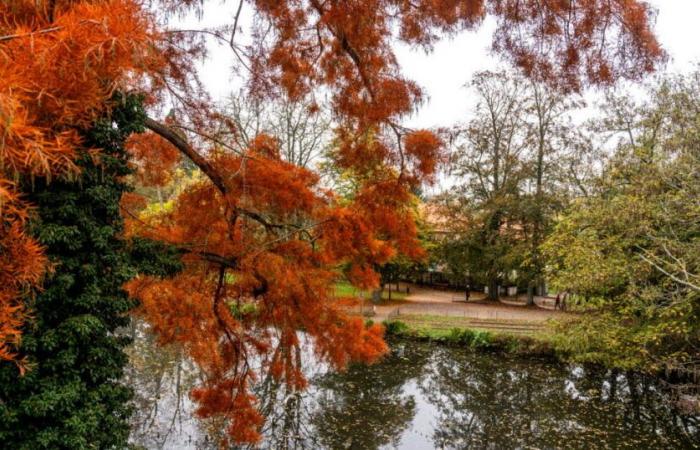The tree stands out as soon as you enter the Parc des Régates. From the fountains of the Esplanade, before crossing Boulevard Poincaré to go down towards the Plan d'eau de Metz, all you can see is it. Very large – the tallest specimens can reach up to 50 meters! –, with branches that seem to want to escape from the park, it displays its glowing foliage without complexes. In this romantic park created a little over a century ago, on the banks of Swan Lake, it looks great. It shares space with other exotic or remarkable trees, such as the astonishing cinnamon maple…
This content is blocked because you have not accepted cookies and other trackers.
By clicking on “I accept”cookies and other trackers will be placed and you will be able to view the contents (more information).
By clicking on “I accept all cookies”you authorize the storage of cookies and other trackers for the storage of your data on our sites and applications for personalization and advertising targeting purposes.
You can withdraw your consent at any time by consulting our data protection policy.
Manage my choices
I accept
I accept all cookies
The bald cypress is a conifer but it has decided to do as it pleases: it loses its thorns in autumn like a common deciduous tree! Like them, it turns yellow and red once the summer chlorophyll degrades before being left completely naked. In Metz, only larch and metasequoia, two other varieties of conifers, also lose their thorns.
Our cypress begins by turning rusty-red, then golden-brown before releasing its light, tapering “foliage” to the ground. This is why it is called the bald cypress.
A tree native to Louisiana
But the tree has another particularity…
At Plan d'eau, this variety of trees was planted by the Germans at the time of the Annexation. “They are therefore around a hundred years old,” explains Sébastien Marqueton, director of the Parks and Gardens Department at the City of Metz. In North Carolina or Louisiana where it originates, the oldest specimens can reach up to 500 years old! With their trunks immersed in bayous, peat bogs and marsh edges, these cypresses have learned to breathe… through their feet!
“Environments saturated with humidity can be asphyxiating, so when the tree ages, it develops aerial roots,” indicates Sébastien Marqueton. These are growths that look like small snorkels “called pneumatophores” and which “allow cypresses to breathe”.
To observe these funny roots, you have to go to the back of the botanical garden, near the children's play area. An old Louisiana bald cypress planted in the small body of water has developed dozens of small “lignified organs” which provide oxygen to the submerged root system.
His big friend from the Jardin des Régates has, it seems, not yet developed this type of growth. Since it's autumn, he just blushes…
“Do you know? Metz” can also be listened to as a podcast
This content is blocked because you have not accepted cookies and other trackers.
By clicking on “I accept”cookies and other trackers will be placed and you will be able to view Acast content (more information).
By clicking on “I accept all cookies”you authorize the storage of cookies and other trackers for the storage of your data on our sites and applications for personalization and advertising targeting purposes.
You can withdraw your consent at any time by consulting our data protection policy.
Manage my choices
I accept
I accept all cookies






